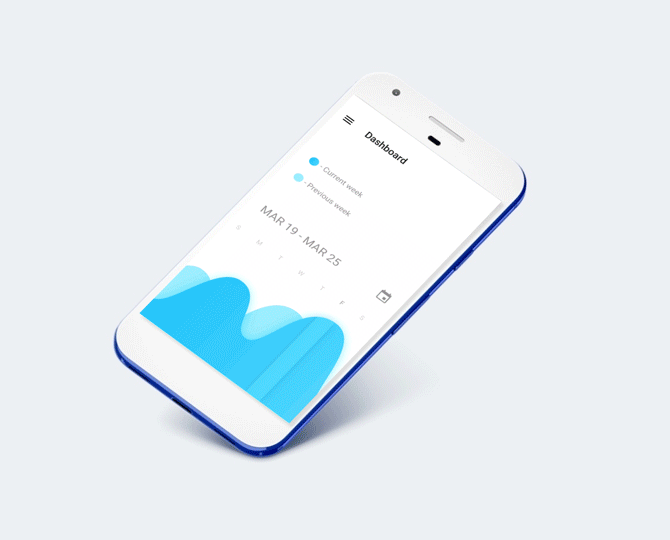Sometime we need to show ViewGroup content with DrawerLayout and very complicated to implement but this library is a DrawerLayout-like ViewGroup, where a “drawer” is hidden under the content view, which can be shifted to make the drawer visible. It doesn’t provide you with a drawer builder.
Gradle
Add this into your dependencies block.
compile 'com.yarolegovich:sliding-root-nav:1.0.2'
Usage:
- Create your content_view.xml (example) or construct a
Viewprogramatically. - Set the content view (for example, using
setContentViewin your activity). - Create your menu.xml (example) or construct a
Viewprogramatically. - Now you need to inject the menu in your
onCreate. You can specify transformations of a content view or use the default ones.
new SlidingRootNavBuilder(this) .withMenuLayout(R.layout.menu_left_drawer) .inject();
API
Transformations
You can specify root transformations using SlidingRootNavBuilder.
new SlidingRootNavBuilder(this) .withDragDistance(140) //Horizontal translation of a view. Default == 180dp .withRootViewScale(0.7f) //Content view's scale will be interpolated between 1f and 0.7f. Default == 0.65f; .withRootViewElevation(10) //Content view's elevation will be interpolated between 0 and 10dp. Default == 8. .withRootViewYTranslation(4) //Content view's translationY will be interpolated between 0 and 4. Default == 0 .addRootTransformation(customTransformation) .inject();
customTransformation in the above example is a user-created class that implements RootTransformation interface.
Menu behavior
new SlidingRootNavBuilder(this) .withMenuOpened(true) //Initial menu opened/closed state. Default == false .withMenuLocked(false) //If true, a user can't open or close the menu. Default == false. .withGravity(SlideGravity.LEFT) //If LEFT you can swipe a menu from left to right, if RIGHT - the direction is opposite. .withSavedState(savedInstanceState) //If you call the method, layout will restore its opened/closed state .inject();
Controling the layout
A call to inject() returns you an interface for controlling the layout.
public interface SlidingRootNav {
boolean isMenuHidden();
boolean isMenuLocked();
void closeMenu();
void closeMenu(boolean animated);
void openMenu();
void openMenu(boolean animated);
void setMenuLocked(boolean locked);
SlidingRootNavLayout getLayout(); //If for some reason you need to work directly with layout - you can
}
Callbacks
- Drag progress:
builder.addDragListener(listener);
public interface DragListener {
void onDrag(float progress); //Float between 0 and 1, where 1 is a fully visible menu
}
- Drag state changes:
builder.addDragStateListener(listener);
public interface DragStateListener {
void onDragStart();
void onDragEnd(boolean isMenuOpened);
}
- Compatibility with
DrawerLayout.DrawerListener:
DrawerListenerAdapter adapter = new DrawerListenerAdapter(yourDrawerListener, viewToPassAsDrawer); builder.addDragListener(listenerAdapter).addDragStateListener(listenerAdapter);
Hope you like this tutorial please comment below.

Share your thoughts